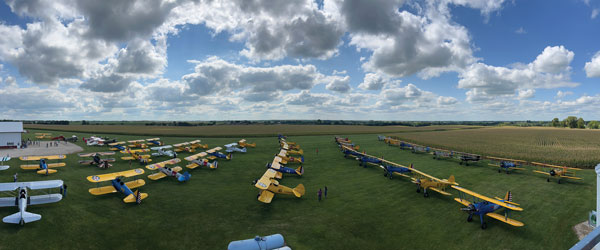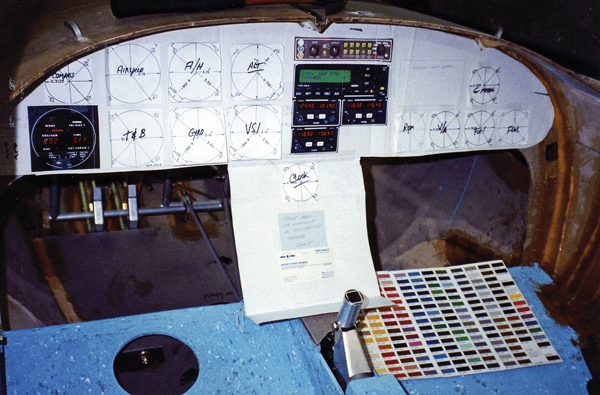By Steve Krog, EAA 173799
This piece originally ran in Steve’s Classic Instructor column in the December 2023 issue of EAA Sport Aviation magazine.
Throughout the past year, I’ve written articles and given informal talks about the weak link in our world of flight training. The renewed interest in pursuing a career in aviation has created a weak link in the entire process, and the process needs fixing before we have a generation of poorly trained pilots encountering flight situations for which they have little or no experience.
Designated pilot examiners (DPEs) are being put in very frustrating situations. Today, nearly 50 percent of the students coming to them for the private pilot checkride fail. There are numerous reasons for the failures, but it all comes down to less than adequate training.
One DPE experienced the situation of the student having little or no basic aviation knowledge. The student couldn’t answer the basic questions asked during the oral portion of the checkride. Examples include, “What airspace are we in at this airport?” The student had no idea. “Are there minimum ceiling and visibility requirements to fly at this airport safely and legally?” Again, the student had no idea. “Which way does the propeller turn?” “What does the vacuum pump represent?” Again, blank stares.
The DPE said, “Describe the engine in the aircraft we’re flying today.” The student responded, “It’s air cooled, I think.” If the pilot has no idea about the engine, how would they deal with a minor engine issue while in flight?
The examiner who had this student had to fail the individual for basic lack of knowledge long before ever considering the flight portion of the checkride. The DPE asked to meet with this student’s instructor only to find out the instructor had left the flight school to join an airline several days before the checkride.
Another DPE shared some experiences as well. In one instance, a student was barely able to stumble through the oral portion of the checkride but was finally deemed acceptable. After preflighting the aircraft, the student and DPE departed the area to perform the flight portion of the checkride. When the DPE was satisfied with the student’s performance, he asked the student to return to the airport.
The student searched the horizon while looking at his map but couldn’t seem to make sense of his location. The DPE finally asked if he knew where he was, and the student admitted he had no idea of his location and no idea how to find his location. Another example of lack of proper instruction.
This DPE also shared another example of improper instruction. During the flight portion of a private pilot checkride, the examiner stated, “The oil pressure is rapidly dropping, and the oil temperature is rising rapidly. What are you going to do?” The student neither said nor did anything but continued to fly as if nothing was wrong.
The DPE waited and again stated the same and got the identical reaction from the student. No comment made and no action was taken. At this point the DPE asked what the student would do if this were a real rather than a simulated situation? The student said he had no idea what to do. His instructor had never taught him about emergency situations.
In another situation the DPE stated that smoke was coming from around the engine cowling and asked the student what action should be taken. Again, this student did nothing and continued flying straight and level. The DPE waited a minute or two and commented that the smoke coming from around the cowling was becoming heavy, indicating a probable engine fire. Then he asked what the student should or would do in this situation. The student had a blank look and said he had no idea because he had never been taught this by his instructor.
In both situations described in the above two paragraphs, the examiner asked the instructors to call him to discuss their respective students and the reasons for failure. Neither bothered to follow up.
Inexperienced Instructors
I have a hard time placing all the blame on the young and inexperienced flight instructors. In many situations they were taught by equally young and inexperienced instructors. The continued weakness in instruction is then perpetuated.
There is an old saying that I’ve mentioned previously. It is, “They don’t know what they don’t know until they acquire many more hours of experience. Without a mentor to turn to for advice and direction, they will continue not knowing what they don’t know.”
I did a quick but unofficial survey of area flight schools flying under FAR Part 61 as well as Part 141. The average age of the CFIs employed was 22. If there was a chief pilot, they would be 23 on average.
The young CFIs were teaching as a first instructor job and had roughly 300 hours of flight time. The chief pilot had 500-600 hours of flight time. In virtually all cases, the CFIs and chief pilots were instructing to reach 1,000 or 1,500 flight hours so they could move on to the next step in a commercial flying career.
None of the individuals made any comments about a love of flying and wanting to share that love. Rather, it came down to how fast they can reach the hour goal to move on. Individuals with this attitude generally make weak instructors.
I asked one CFI how many hours on average it took to make the first solo flight. The response nearly knocked me off the chair.
He stated, “At our flight school (Part 141), a student isn’t even considered for solo flight until receiving a minimum of 40 hours of dual instruction.”
My opinion of this is complete abuse. These schools are charging anywhere from $350-$400 per hour for dual instruction. That computes to a $14,000-$16,000 expense before ever making a first solo flight. Not only is the instruction quality in question but so is the expense.
A past student of mine enrolled in a well-known university to pursue advanced flight ratings. Due to overselling the program, the student, who was pursuing an instrument rating, was only able to get on the flight schedule once every seven to nine days. If the weather didn’t allow for the flight, it wasn’t rescheduled but rather the student had to wait another seven to nine days for the next scheduled flight slot.
For those of you reading this article who have earned an instrument rating, you know you can’t fly once every week or so and establish, let alone maintain, any level of instrument flight proficiency. Rather than taking the “promised” two semesters, this student was involved in flying four full semesters plus one summer school session to earn the instrument rating. Again, this is a real abuse of the system.
For comparison, another former student enrolled at a smaller university with a Part 141 flight program and completed the instrument rating in one-and-a-half semesters. Unfortunately, this school has now gone the way of the larger universities and accepted many more students into the flight program without adequate instructors to accommodate the student numbers.
Our Method for Preparing a Student
When we have a student who has completed all the requirements for a certificate or a rating, we have a program to prepare them for the checkride.
After flying with an instructor to put polish on their maneuvers, the student first undergoes a simulated checkride but with the provision that should a maneuver not be performed to FAA standards, we put the checkride on pause and review the maneuver. Once that is completed, we continue with the checkride.
At the conclusion of the simulated ride, the student, instructor, and the instructor performing the simulated ride discuss what is needed to perform beyond the minimums of the FAA requirements. After another hour of practice with an instructor, a second more comprehensive simulated checkride is given, usually with a satisfactory on all requirements.
In preparation for the oral portion of the checkride, we provide our students with a detailed outline of questions and scenarios to study on their own time. Then two instructors will meet with the student to ask questions and discuss scenarios. Once this is done satisfactorily, we pronounce the student ready to take the checkride.
This formula has worked well for me and for us at Cub Air. I have been instructing in one capacity or another for 50 years, and to date I have never had a student fail the oral portion of the checkride, so I think we’re doing something right.
Regarding the flight portion of past checkrides, we have a success rate well above the national average. Mentioned previously, the national average is about a 50 percent pass rate. Here at our flight school our first pass average is something more than 90 percent. I’m proud of that and proud of all the CFIs who contributed to making that happen.
Steve Krog, EAA 173799, has been flying for more than four decades and giving tailwheel instruction for nearly as long. In 2006, he launched Cub Air Flight, a flight training school using tailwheel aircraft for all primary training.
Post Comments
Discover more from reviewer4you.com
Subscribe to get the latest posts to your email.




